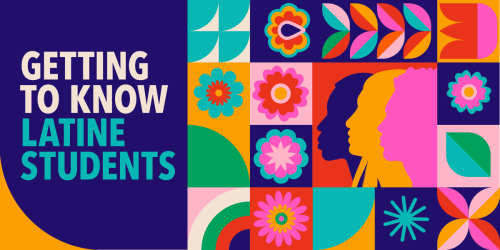Strategies for Encouraging English Learners to Talk About Their Learning

English learner students (ELs) face significant challenges in meeting the new Common Core State Standards. Not only must they negotiate the demands of new content and analytical practices, as their peers do, they must simultaneously develop the literacy skills to access the information and the academic language required to express their understanding. The authors of a new book, English Language Learners and the New Standards, acknowledge these challenges but choose to embrace the Common Core as a new opportunity for ELs and their teachers.
Margaret Heritage, Aída Walqui, and Robert Linquanti focus on the remarkable gains in both language development and content knowledge that can occur when teachers create “powerful invitations” for students. They define these as frequent, systematic opportunities for students to talk about subject matter content at the same time they are developing conceptual understanding, analytical approaches, and language skills. They liken such an approach to an apprenticeship in which students become partners in their own learning and are given frequent, low-stakes opportunities to put their learning into practice. In the authors’ view, the Common Core is well suited to such an approach.
One way to think about integrating “powerful invitations” into instruction is through student talk. As the image above suggests, student talk is a high-leverage strategy for encouraging low-stakes practice in the language, content, and analytical practices inherent in each subject. In my classrooms, I have tried multiple approaches, and through much experimentation, I’m convinced that what really matters is giving my students get as many opportunities as possible to practice subject-specific academic language through focused conversations with their peers. This is exactly what Heritage, Walqui, and Linquanti mean by an apprenticeship—purposeful, applied practice of language and skills. I’ve heard many second-language learners attest that applied practice makes all the difference in developing autonomous use of academic language and skills.
One approach I've used to create the space for applied conversational practice over time is the collaborative poster. It’s an approach that encourages student autonomy, which is emphasized in the new content and language proficiency standards. Students work together to display elements of what they are learning as they are engaging with class texts, tasks, and classroom content. It's an activity that pushes students to build their readiness in the academic language, class content, analytical skills they need to be successful. Collaborative posters can be integrated into almost any content, and they’re a great way to get students to talk about text in purposeful ways.
The structure of the poster can also be adapted to the content and focus of your class. When I want to see how my students are negotiating our class texts, I typically incorporate the following features:
- Cogent title: Students create a title to present the poster’s central theme
- Essential question: A question to guide students as they analyze the text with purpose
- Salient quote: A quote that reveals the essence of the text
- Symbol: A symbol that represents a core theme of the text
- Paraphrased interpretation: Students use their own words to interpret the meaning of the text
Collaborative posters can also serve as a clever formative assessment tool. One helpful trick in this regard is to apply marker rules. These rules are simple, and they can help you gauge how students are doing with their interpretation of the text, both independently and collaboratively. When marker rules are in effect, any work completed by a particular student must be done in their assigned colors. For instance, if I were to do a collaborative poster, I would select two colors, sign my name in those two colors, and complete all my work in those two colors.
Finally, it’s helpful to integrate a variety of reading scaffolds prior to introducing the collaborative poster. Essentially, the poster task becomes a formative synthesis that encourages students to return to their texts and graphic organizers with purpose—mining them for specific information to support their ideas. Prior to creating the poster shown in the photo, our colleagues from Beaverton School District used this collaborative jigsaw organizer to analyze their text and frame their discussion. Later, they used this tool and their annotated texts to inform their poster.
Collaborative posters are only one example of the many strategies for fostering language development and content knowledge through student conversations. Ultimately, you have to find the strategies that work best for your particular group of students. What’s most important is to send the “powerful invitation” to students to actively engage—verbally, physically, and mentally—in their own learning. Such an environment creates the necessary space for students to apprentice in the myriad skills they need to be successful.



